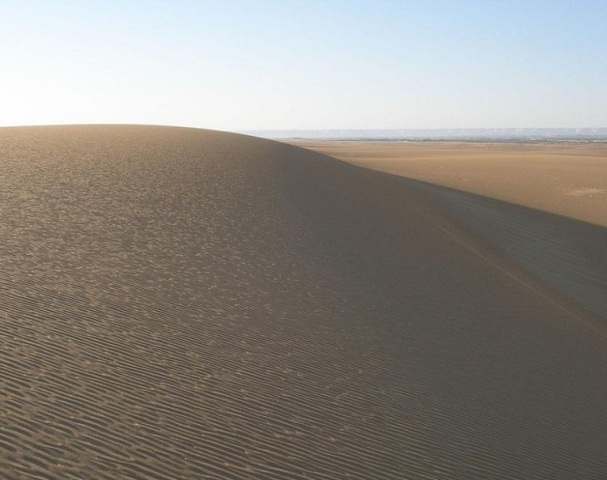Sahara desert is the second largest desert in the world. Go through the article, to explore some more interesting and fun facts about Sahara desert.
Sahara Desert Facts
Sahara Desert is a great desert, located in the North Africa and covering almost eleven countries, fully or partially. Being the largest hot desert in the world, Sahara Desert is spread over an area of more than 9,000,000 sq km. In terms of area, Sahara desert can said to be equivalent to the continent of America. It is said that the desert had a wetter climate thousand years ago. In fact, Sahara desert is believed to have been subjected to various atmospheric changes in the past, which led to the changes in its climatic conditions and made it what it is today. The desert divides the continent of Africa into two parts - North and Sub-Saharan Africa. To know some more interesting and fun facts about Sahara Desert, read further. 

Image: Vyacheslav Argenberg@flickr
Interesting & Fun Facts About Sahara Desert
- Sahara desert is the second largest desert in the world, after Antarctica, and the largest hot desert in the world.
- The desert extensively covers almost all the parts of Northern Africa. It stretches from the Red Sea and includes parts of the Mediterranean coasts to the outskirts of the Atlantic Ocean. In the southward region, it is limited by the Sahel, a belt of semi-arid tropical savanna separating it from Sub-Saharan Africa.
- The countries which Sahara desert encompasses include Algeria, Chad, Egypt, Libya, Morocco, Mauritania, Mali, Niger, Sudan, Tunisia and Western Sahara.
- The history of the desert dates back to 3 million years ago.
- Sahara desert has a combination climate. While it has subtropical climate in the northern parts, the region in south experiences tropical conditions.
- Geographically, Sahara desert is rocky, with varied elevation. It contains underground rivers, which sometime penetrate the surface, resulting in oases.
- There are some sand dunes in the desert which reach a height of about 180 meters.
- The central region of Sahara desert is elevated, when compared to the other areas, with peaks such as Emi Koussi and Tahat.
- It might sound strange, but the peaks in the desert are snowcapped during the winter. The eastern part of Sahara - Libyan Desert, is dry and has very few oases.
- The climate of Sahara desert is very hot and dry. During the day, it is very hot, while night brings along chill.
- Sahara desert receives only 8 inches of rainfall per annum. This is one of the reasons for the meager population in the region, with just 2 million people here.
- Earlier, the desert used to be a fertile area, in which elephants, giraffes and other animals grazed. Slowly it started becoming drier and the fertile landscape gave way to infertile region, as we see today.
- The center of Sahara desert is excessively dry, with little or no vegetation. There is sparse grassland and desert shrub with trees and tall shrubs, where moisture collects.
- During the last ice age, the desert was bigger than what it is now, extending south beyond its current boundaries.
- Sahara desert has one of the harshest climates in the world. The prevailing north-easterly wind often causes the sand to form sand storms and dust devils.
- Arabic is the most widely spoken language in the Sahara region, from the Atlantic to the Red Sea.
- Sahara stands divided into Western Sahara, Central Ahaggar Mountains, Tibesti Mountains, Aïr Mountains (a region of desert mountains and high plateaus), Tenere Desert and Libyan Desert (the most arid region).
See also
More from iloveindia.com
- Home Remedies | Ayurveda | Vastu | Yoga | Feng Shui | Tattoos | Fitness | Garden | Nutrition | Parenting | Bikes | Cars | Baby Care | Indian Weddings | Festivals | Party ideas | Horoscope 2015 | Pets | Finance | Figures of Speech | Hotels in India : Delhi | Hyderabad | Chennai | Mumbai | Kolkata | Bangalore | Ahmedabad | Jaipur
- Contact Us Careers Disclaimer Privacy Policy Advertise With Us Lifestyle Sitemap Copyright iloveindia.com. All Rights Reserved.







